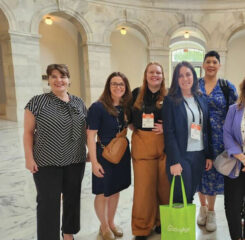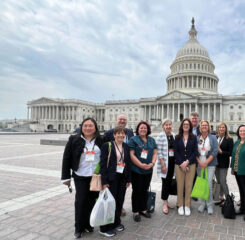CMS Announces PACE Final Rule
On May 28, 2019, the Centers for Medicare and Medicaid Services (CMS) announced a new final rule for PACE (Programs of All-Inclusive Care for the Elderly) programs.
The final rule increases flexibility for PACE programs and may have the effect of expanding access to PACE among consumers. The rule’s publication has been long anticipated- the proposed rule was first issued in August 2016. LeadingAge submitted comments during the comment period in October 2016.
According to CMS, “The majority of participants served by PACE are dually eligible for both Medicare and Medicaid. More than 45,000 older adults are currently enrolled in more than 100 PACE organizations in 31 states, and enrollment in PACE has increased by over 120 percent since 2011.“
LeadingAge prepared a summary analysis of the final rule (also in PDF). Below is a synopsis of our review. LeadingAge also created a checklist for PACE organizations to comply with the Final Rule.
Members with questions or comments about the Final Rule are encouraged to reach out to Brendan Flinn of the LeadingAge staff.
In addition, LeadingAge hosted a briefing on the Final Rule for members on June 11 at 4pm EST.
Email Brendan Flinn of the LeadingAge staff if you have questions about the Final Rule.
LeadingAge’s Overall Analysis of the PACE Final Rule
The Final Rule includes key provisions that will make it easier for PACE organizations to staff operations. For example, it will allow PACE organizations to hire staff without one year of experience working with elderly/frail populations if those staff are provided training, rather than only being able to draw from those with one year of experience. This will make bringing in potential new talent, particularly at the entry level, easier. It further allows physician assistants and nurse practitioners to serve as the primary care provider, rather than requiring a physician fill this role. It also allows people to fill up to two roles on the interdisciplinary team if they are licensed and qualified to do so.
The Final Rule makes the onsite review process less prescriptive and frequent. For the trial period onsite review, the Final Rule calls for “observation of program operations.” This replaces more prescriptive current regulation, which requires chart reviews and interviews, among other items. It removes the requirement for onsite audits every two years after the trial period, reducing burden for both PACE organizations and CMS.
PACE organizations should be aware of new requirements set forth in the Final Rule. For example, they will be required to develop and implement compliance oversight program and to take action if problems arise. There are also changes to requirements related to marketing, including training for contractors, and data/record retention timelines.
There are not many differences between the proposed PACE rule issued in 2016 and the Final Rule. Some key proposals were not finalized, such as requiring PACE organizations to monitor and audit their organizations for compliance. In addition, CMS continues to not apply the HCBS Settings Rule to PACE Organizations.
The Final Rule will take effect in early August. LeadingAge encourages PACE members to review the Final Rule in full, and to be in touch with questions or concerns. LeadingAge will develop resources (e.g., checklists to support our PACE members as they pursue compliance with the Final Rule.

Most Recommended
February 29, 2024
Say Yes to Lobby Day!
April 05, 2024
Cyberattack Updates: Change Healthcare Payment Platform
March 27, 2024
 Colleagues on the Move, March 27, 2024
Colleagues on the Move, March 27, 2024
April 12, 2024
Improving Medicare Advantage
Recently Added
April 19, 2024
In the Words of Advocates: Lobby Day Stories from Members
April 17, 2024



